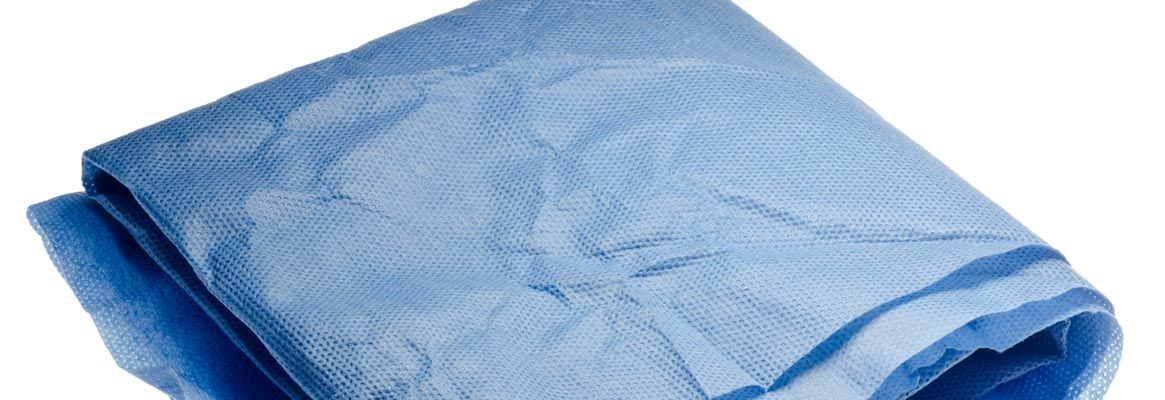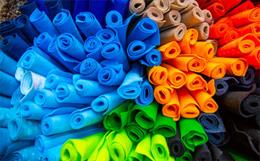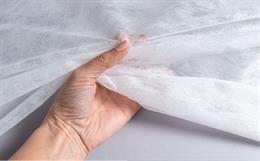Introduction
"Mr. Berlin - please advisehow I invest my money in the nonwovens (or baby-diapers or as many like to say"Pampers" or "Huggies") business!?"
What's your answer to that one? I've had that question more than 50 times inthe past five years - covering a couple of tradeshows in India as well as someof the major worldwide shows and in numerous emails and phone-conversations.There are plenty of people out there that made good money (with hard work) inthe conventional textile industry and now they want to pass their life's workand legacy to their daughters and sons (honestly - most sons - although Ipersonally believe that the daughters would be a better a choice...).
Most of these people havedollar-signs in their eyes and come from a firm belief that the way to make afortune is a market with low production cost (i.e. low salaries and high labourforce) and an export driven market. My answer is (more or less) always the same... "If I knew - I would have done it myself..." Simply - there's noquick fix. Not for the nonwoven market - not for any market as a matter offact. All is coupled with hard work, determination, good business practice andinnovation.
Nothing less - nothing more.Simple as that. But then... how does one go about starting up a nonwovenfactory or an AHP factory, and what will it entail, and most importantly - whatdoes actually come out in the end? Through this very unscientific article Iwill share my own observations (mainly based on the Indian market) and also myexperience on the worldwide market - through numerous visits, travels,valuations and sales of nonwoven and AHP equipment over all continents tobeginners and already experienced producers alike.
Nonwovens history and general overview
Nonwovens started out decades ago (even a century ago some may argue withpressed woollen felts) but let's focus on the main points - how to get a pieceof textile/cloth/web to stick together without weaving or knitting it. You canachieve this through mechanical bonding, thermal bonding and resin-bonding. Thevarious ways to get the actual web also vary; straight from fibre (likeconventional textile industry) or through extrusion or through even more novelconcepts like nano-spinning. It all though boils down to the fact that you areable to create a product that either is being produced at higher rate (comparedto conventional weaving or knitting) or that has very different properties thanwhat is achievable through conventional methods.
The driver here has been two-fold,innovation and capacity. Being able to produce a similar piece of cloth/textileat a speed which is much higher of course has an advantage - or being able toproduce a web/textile/cloth that has properties that cannot be achieved throughconventional production methods. New methods (of production) as well as newusage areas (most importantly) has come up all the time - whether driven byend-users (direct consumers like in the baby-diaper industry or the fem-careindustry) or through other business areas (like automotive makers) it does notreally make a difference - the point is that it is an expandable and growingtechnology. If the industry can substitute foam in car interiors with nonwovens(especially those made with recyclable raw materials) it is a step forward.
If we can lower the emissions from a coal factory through specially tailored nonwovens, it is another huge step forward. Both of the above examples have already been achieved, although constant change is triggering new innovations and even better usage. I personally believe that there is no end to what can be achieved with nonwovens technology and it is all in the hands of great minds working in R&D departments all over the world. Let it continue to be that way and let governments and trade associations work for the benefit of creating less barriers and more simplicity concerning new nonwoven products.
Needless to say - this goes as well for the absorbent hygiene industry - 40 years ago we had a (barely) absorbent core, coupled with some plastics around it - trust me - I was one of the guys wearing it back in the early 70's. Today we have "training pants", "swim pants", "night pants" but maybe most importantly, there's been huge success for incontinence-related problems both for elderly as well as others. There's also been huge developments in terms of feminine hygiene care - a pure "consumer to business" driven market with "ultra-thin" products, "night-purpose" products, "fitness"- purpose products and the likes. Again - let it continue this way and I'm sure we will see more innovation and more purpose for nonwovens and nonwoven converted products in the future.
Distinctions between Durables and Disposables
There are two very different paths a (potential) nonwoven roll-goods producer can choose. Either he produces for the hygiene (and/or medical) industry or he produces for the technical industry. To put it simply, you have the disposable nonwovens within the hygiene industry and you have the durables within the more technical industry. So what is worth going for? There's no easy answer for this - I believe that anyone that has the slightest interest in the nonwoven business have not missed that various and numerous acquisitions and mergers that have taken place in recent years.
The interesting thing about them though, is that they have taken place both within durables and disposables. This means that there is room for anybody to grow in both the disposable and the durable sector. If we were to simplify the matter - one could argue that in order to be successful within the disposable industry you need to be huge - think economy of scale! The major players today are not that many, but there are still family-owned companies with one or several spunbond lines that get by just fine. On the technical side the field is pretty much wide open. As long as you have a good idea of what you want to produce and for which market, then it's up to you.
Can you do a better product than your competitors - not necessarily at lower cost, but that could help as well. In developed markets price is not always key - more likely it will be performance, so if you can prove that you have better performance, then you may stand as the winner...
A simple distinction between durables and disposables are;
- durables; something that is (most of the time) found in an industrial segment, like in cars, airplanes, roads, buildings and so on.
- Disposables; something that is found in "single-use" articles such as baby-diapers, sanitary pads or adult-inco items. Wipes (dry and wet) also belong in this sector, as do many medical applications such as drapes and gowns and other operating equipment such as facial masks.
Converting a nonwoven into a finished product
It is though important to note that a wet-wipe for instance, is seldom produced by the roll-goods producer. The roll-goods producer will make the basic raw-material (roll-goods) for the wet-wipe and then send it to a converter who is more focused on making the wet-wipe attractable to the audience, be it in terms of number of pieces in the pack, the brand of the pack, or the smell of the wet-wipe. This is important to understand, because many companies believe that they produce a wet-wipe in a nonwoven line, which is of course not correct. In the nonwoven line, you produce the raw material for the wet-wipe. It is then *converted* to a wet-wipe.
I think that we will see a huge difference here between the mature and old (Europe, US, Japan and to some extent South-America) and the "un-tapped" markets (Africa, India and certain parts of Asia). Traditionally in the mature markets there has been a much defined line between the roll-goods producers and the converters. To make a simple explanation;
A) roll-goods producer. Utilizing a special type of fibre and producing a needled felt in continuous form.
B) A converter that takes the roll and converts it into other pre-fabricated formats such as sheets or any other form that the market needs. Can also be a moulder for instance - utilizing the nonwoven in a mould process to then deliver to...
C) For example any automotive maker (BMW, Skoda, Audi, Toyota, etc...) who in this case will be the end-user and use the product as part of their vehicle (then sold to a private user obviously).
In India (most notably) this is not the case. In India there is a need for finished goods - because category C (above) is already existing in India - and they purchase from "converter" B above - *but* there is a huge difference. "B" is usually an importer/wholesaler in India. Someone who is purchasing the needed product from "another B" somewhere else in the world. Thus, this leaves A with two problems;
- A does not even start up a production - because he simply has no idea who his customers are, or
- A does not have the converting capability in order to sell directly to "C".
I do not think that this will change as long as "B" can still make money from being just an importer/whole-seller. This leaves the nonwoven industry in India (and certain parts in Africa) with a difficult dilemma. Either they have to be part of encouraging importers to become converters or they have to start converting their finished goods themselves in order to be able to sell directly to "C".
Only when this happens we will see a "boom" in the Indian nonwoven industry. My hopes are rather high though, as the nonwoven roll-goods producers I have visited have started to incorporate in-house converting capabilities. Sooner or later this will make less room for the importers and whole-sellers and hopefully it will also create the growth of specialized converting companies. If not - the roll-goods producers will be doing double duty as both nonwoven producer and converters - which does not have to be a bad thing at all. In fact - in India, it may be perfectly alright, at least for the next 10-15 years, until the industry gets even more specialized.
Hygiene converting
This is a special segment compared to what has been described above. In the disposable or hygiene segment we normally regard the company that produces the actual product (baby-diaper, fem-care or adult-inco) as the converter. This company is indeed a converter as they purchase various raw materials (nonwoven being only one of them) and converts several raw materials into a finished product which is then sold to a distributor, whole-seller, chain-store, pharmacy or the like.
There are several such companies in India and Africa already. However, all are facing the same problem - the demand is not yet fully there, which makes it difficult to go for high-productive equipment, which is almost a necessity when so much of the production cost lays in the raw material. Obviously, this will change with higher disposable incomes and more awareness concerning private hygiene. However, many of the people I speak with do not understand how they can compete with the giants - thinking that they have already the full market...
This may be difficult to grasp, but there are numerous companies in both Europe (West and East) as well as North America, and definitely in South America that get by anyway. They are not P&G, KC, SCA or Unicharm. They make baby-diapers as private label - but in order for this to work, you need to have a large distributor (preferably a store-chain owner) that wants his own baby-diaper brand and does not want to give it to the big multinationals (MNCs). Anyway - these companies do very well and they compete with the MNCs and have a sufficient chunk of the market. However - this can only be achieved through good marketing and most importantly, a set-up of good logistical channels. Unless you have that - you cannot compete at all.
India - the big mystery?
Why has not India yet caught up is the question many are asking. I've gone through some of the underlying reasons already, with the lack of converting industry and capability in India and this is a true explanation but it 's not the full truth. If we look at the absorbent hygiene markets or more explicitly the baby-diaper market there are several key factors that have not been in place before (and some are still not). The first and major obstacle for a long time has been that the disposable income has not been high enough to cross the threshold where diaper purchases start. That is not the only factor though. There are also several cultural factors that have not been taken into account.
One thing that many seem to have missed is that India is (or at least has been) to a very large extent a "non-disposable" country. People use and re-use as much as they can, in everyday life, at work and many people making a living of just re-cycling items. Therefore, just throwing things away has not been the Indian mindset. Another very important factor has been child-care. As India has moved into a society where both men and women wake up in the morning and go to work one would think that you would see day care centres and kindergartens all over the place, but keep in mind, this working generation still have their parents alive, which means that there is usually a grandmother or grandfather that can look after the kids.
Thus no day care or kindergarten, less need for baby-diapers. When these changes and more kindergartens will come up, we will surely see a rise in sale of baby-diapers. Another important factor is that baby-diapers in India are usually not purchased like in the Western society, i.e. in big bags. Our idea has always been, the more you can fit in the bag, the cheaper the price of each single diaper. If you have small kids and you know that youll use the diapers, then you purchase as large a bag as you can store. Well not in India, better to purchase them in 5s or 10s, because they are mainly used when the family is travelling or going out. At home they are not used as much. So these are some of the cultural aspects that the baby-diaper manufacturer most weigh in when manufacturing (or thinking to start) in India.
On the production side there are other obstacles the main problem being that many of the key raw materials have to be imported. There is no production of diaper-grade pulp domestically in India and theres no production of SAP domestically either. This needs to be imported and then one has to take into account the import duty. There has also been the problem that there has been less import duty on the finished product than on raw materials needed to produce the product. I dont know if this still is the case, but if so, a strong lobby would be needed to change this as it would make local production cheaper and create more jobs domestically.
Another large issue is the lack of chain-stores in India. In Europe and in the US you have your Walmarts, COOP, Penny market, Auchan, etc and these stores are all big purchasers of diapers. If you can grab one of these into your account you have quite a lot of your production ready. If you on the other hand, need to sell 10 bags here and 10 bags there to local pharmacies and "mom & pop" stores, then obviously it becomes more complicated, takes longer time and requires a larger sales force. This however is bound to change as many of the large chain-stores have started establishing themselves already in India. This will also make the logistics easier as that is a quite big problem today. India is a very large country and not having the best infrastructure available, transports take time and cost money, both being such parameters that you like to avoid if you are producing Fast Moving Consumer Goods.
Sustainability
Sustainability has been the trend key word for a couple of years now. Every company somehow tries to incorporate it into their mission and vision statements and the word has almost lost its meaning, unfortunately. But let's try to look at this objectively and ask ourselves whether nonwovens (both disposables and durables) can be part of a sustainable movement or not?
If we take the industrial wipe as an example, the traditional thought has always been that it's better to use old cotton rags and then send them for washing and cleaning until they are completely worn out and then thrown away. Apart from the obvious fact that a nonwoven industrial wipe can be tailored to have inherent properties that a normal cotton rag cannot have, the most interesting fact is actually that using a nonwoven industrial wipe a limited number of times (maybe only one time) and then throwing it away is actually better for the environment, than using and washing a cotton rag.
The problem with the cotton rag is that it not only consumes water and detergents and power in the washing process, but an industrial wipe also contains a lot of heavy metals that are released through the waste water. Several studies have been carried out on this subject and it clearly shows that a disposable industrial wipe that is properly handled (depending on its' usage) and thrown in the correct waste bin is much better for the general environment than taking the same cotton rag and washing it. The same applies in the hospital industry with disposable drapes and gowns. One of the largest problems in hospitals (and consequently for society) is HAIs (hospital acquired infections). Multiple studies show that the HAIs are drastically reduced by using disposable drapes and gowns (if they are handled correctly after usage) than using washable drapes and gowns, because bacteria tend to stay in fabric and can (before washing takes place) spread to other areas of a hospital for example.
There is always the issue of landfill and how much sanitary products make up for of the total landfill. I would however like to argue that a sanitary product by no means belong in a regular landfill, but should be in a separate one, but better yet, it should be incinerated and if properly incinerated it will release a minimum of harmful gases and the power gained in the incineration process can be used for other purposes. However - and it is important to point this out. This is not the responsibility of the nonwoven producers to arrange for. That would be like holding the car manufacturers responsible for having safe roads to drive on in order to avoid accidents. It is up to the user (private, company, public or other) to use and dispose off the products in a correct way and then it is up to larger governmental and private bodies to handle the waste. In many European countries it is also a good business to handle waste properly and in Sweden for example, waste is acquired from other European countries in order to properly dispose of it.
Wrapping it up and looking out globally
Here is a short Q&A section (with simplified answers) that covers a few of the topics that we are asked about the industry.
Q: Why has not India yet caught up and when will it?
A: The potential in India is huge, considering that nonwoven consumption per capita is far below other countries and even imports are accounting for 80% of that consumption, so the space to grow with domestic production is huge, it's all about finding the right product and market. India has not yet caught up because of the many factors discussed previously in this article and it may well take another 5-10 years before the country is up to speed, but it will come.
Q: What is the potential for nonwoven production in the world and will it stop?
A: The potential even globally is large. It all depends on whether old applications will continue to be used and in demand, for example, the more cars that are manufactured and sold, the more nonwovens will be needed and there are really no signs that the automotive business will slow down. It is also a question of finding new areas of application - for example replacing foam in car seats with nonwovens. The global demand for nonwovens as a whole is forecast to rise with more than 5% annually.
Q: Can nonwoven production be competitive compared to China?
A: Yes of course. The main cost for producing nonwovens or absorbent hygiene products lays in the raw material and the raw materials are bought and sold on an open world-market with the same price structures for everyone (more or less). Having cheap labour is not really an issue when you produce nonwovens or AHPs because it's not that labour intensive when you compare it to the conventional textile industry or even more so, the garment industry.
Q: Can we make nonwovens and/or AHPs in India and export to Europe.
A: Yes you can, but your focus should rather be on the domestic market for several reasons;
1) The domestic market needs the products as well - it's only up to you to find the right sales channels.
2) You cannot really compete with a cheaper product and export to Europe and/or US, because your cost advantage is not that high and the cost of freight might "eat" your profit. Especially AHPs and certain nonwovens can be very bulky and thus not really "export-friendly".
3) If you grow your domestic and local market trying to capture a larger chunk you are most probably better off in the long run, than trying to take a small portion out of the highly competitive European and US markets, which anyway are mainly driven by extensive R&D and high-end products.
Q: With all the mergers and acquisitions that have taken place in recent years - is there really room for smaller producers?
A: Yes of course! There are normally two types of mergers and acquisitions that have taken place;
1) Economy of scale - mergers mainly in the spunbond segment, where large and semi-large spunbond producers merge in order to get synergy advantages both when purchasing raw-material and also trying to negotiate with their (much larger) customers (read P&G, KC, SCA and other AHP MNCs.)
2) the other M&As that have taken place are really more interesting, because they stem from the fact that when nonwoven production started up in Europe and the US, one company would usually have several production technologies and several different products, catering to a vast array of different markets. You could simplify it even more and say that someone that had a needlepunch line would make products for everything where needlepunched fabric could be used. Over the years, production became leaner and more sophisticated and one producer chose to go towards automotive whereas another producer chose to go towards the construction industry. Thus, these different companies are purchasing parts of their respective companies in order to grow their own niche, rather than just creating a larger company.
So yes - there's still very much room for smaller players in the industry, especially in the niche markets. But looking at the developing world it can just as well be that a producer can still make a multitude of products for another 10-15 years, before there are enough producers that can merge with each other in order to create highly specialized companies.
About the Author:
The author is the MD of Investkonsult Sweden AB - professional consultants to the nonwoven and absorbent hygiene producers worldwide.








